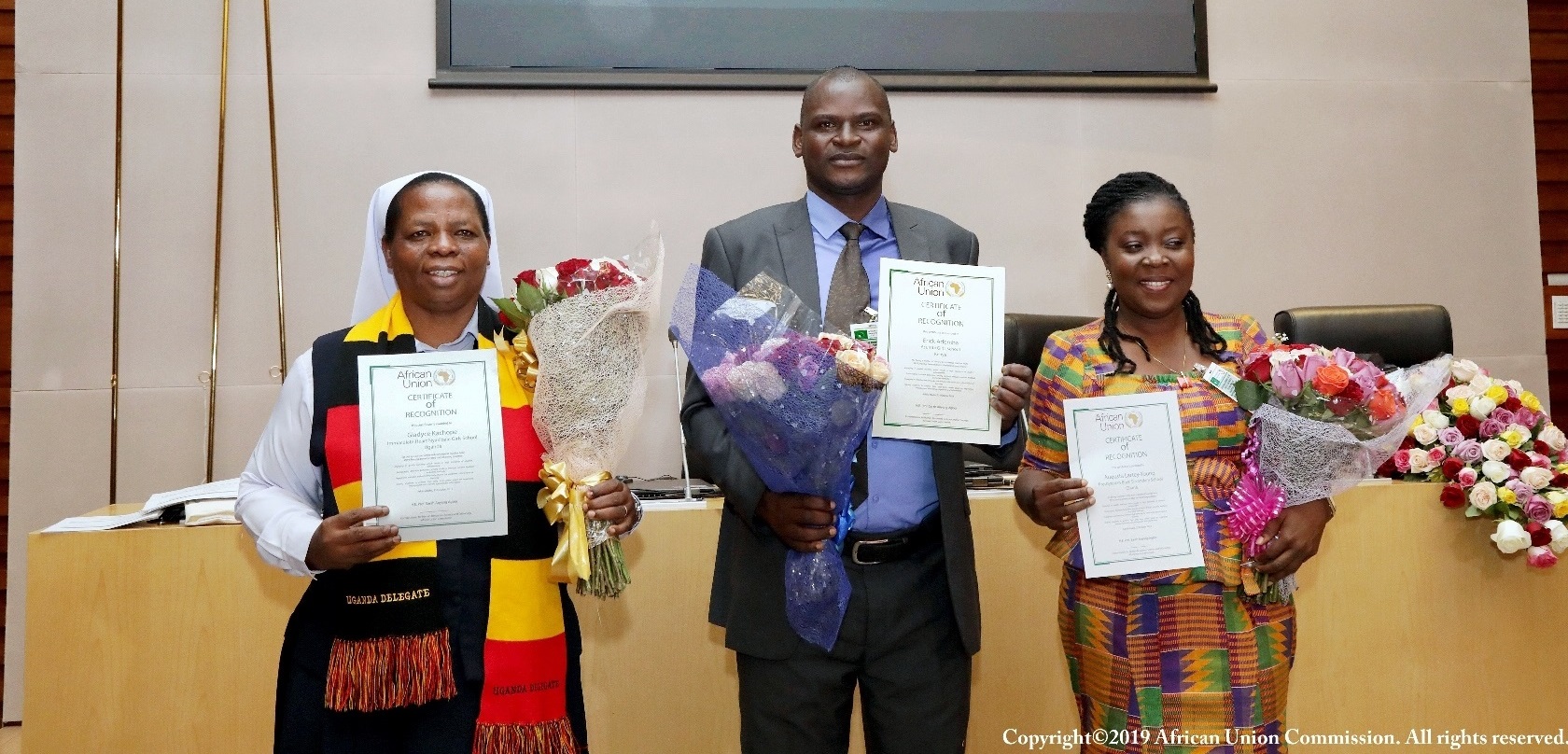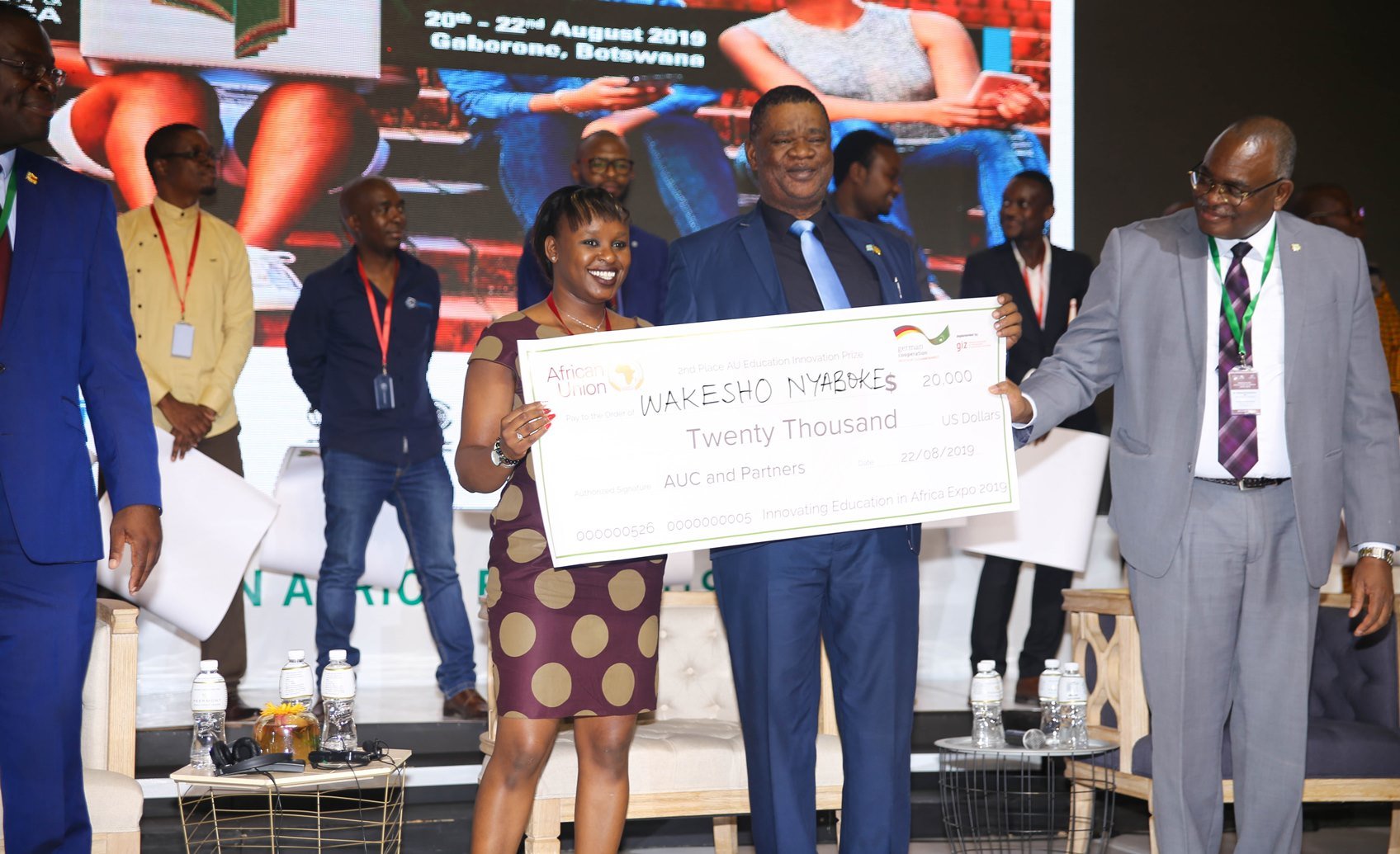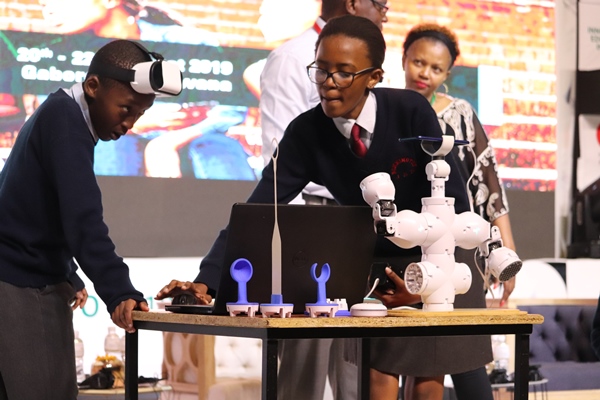
Title of Innovation: Mavis Talking Books
Year of implementation: N/A
Implemented by: Mavis Computel Limited
Website: www.maviseducation.com
Country/Countries where the Innovation is being implemented: Nigeria
Problem being solved
Shortage of quality teachers who can provide quality personalized/differentiated learning – especially in underserved communities
According to the 2015 UNESCO Education for All Global Monitoring Report, 3.4 million new primary school teachers are needed to be recruited by 2030. Sub-Saharan Africa, accounts for 67% of this number. Nigeria alone needs nearly 400,000. Top-quality teachers are often not attracted to teach in the rural communities where the need is greatest for many reasons, among which are poor remunerations and incentives. Most of these teachers are not able to teach in the mother tongues of the children. Lack of adequate learning materials in both English and the local languages poses additional challenges to the teachers and pupils. All these lead to very poor learning outcomes.
Description of innovation
Mavis Talking Books™ - Everyone learning, Everywhere a Classroom™
Our solution focuses on using our Mavis Talking Books™ technology and Mavis Education Model to provide high quality, learner-centred education for all, irrespective of their literacy level and language. A Mavis Talking Book (MTB) consist of a digital pen (Mavis Pen) and a specially printed book. When the pen touches text or pictures in the book, the pen reads out the corresponding audio, including interactive games, quizzes, multi-language translations, etc. We program quality content, developed by experts, into the Talking Book format in a language that the user understands. The Talking Book does not require the Internet to function. One Mavis Pen can work with up to 100 books. We started with Basic Education to lay a solid foundation.
Our Mavis Education Model enables children using MTBs in a classroom to learn in small groups of not more than 5 pupils per group. An audio splitter connected to the audio port of the Mavis Pen and individual earpieces connected to the audio splitter enable sharing by the children. The children learn on their own. The MTBs serve as intelligent and tireless instructors, while trained teachers serve as facilitators, overseeing many small groups. A small group reinforces positive peer pressure where there is collaboration and high degree of participation. Each small group can learn at its own pace. It can even learn a different subject. Multi-grade classrooms are also supported. These lead to highly improved learning outcomes. Recorded average test results before and after the using MTBs are about 30% and 82.5% respectively.
Some Deployments:
UKaid (DFID):
- Literacy & Numeracy project using the Mavis Talking Books™ and Mavis Education Model™ deployed in over 117 low cost private schools in Lagos, Nigeria under the Developing Effective Private Education in Nigeria Challenge Fund project to reach over 6,000 children (Grades 1 to 3). Video: https://youtu.be/4KfjVafBQZY
- Also deployed in public primary schools in Kaduna, Kano, Katsina, Jigawa and Zamfara states under the Teacher Development Programme.
US Embassy in Abuja: Literacy & Numeracy project to reach over 400 out-of-school children in Abuja.
Mavis Academy: Our chain of low-cost schools using the Mavis Education Model to deliver quality learning at school fees of about $7/child/month.
Outcomes and Impact
Canaan Children School - Lagos
Emeka Bassey is a pupil of Canaan Children school. He is in basic 3. Emeka among others has improved immensely in Mathematics as a result of his interaction with the talking pen and book. His interest in Mathematics as a subject was very low with lack of concentration but with the introduction of the talking pen he has suddenly become addicted to the subject. Learning the subject became fun and easy. He has also become a leader. He learns faster with the pen and also loves to carry other pupils along. The general success of Mavis talking pen and book has been the ability of the pupils to learn with less supervision.
Potential to be scaled and replicated
Our goal is to collaborate with key education stakeholders (private sector, development partners, governments) across Africa to provide quality basic education in the language the learner understands, at a fraction of the cost. We also plan to expand our Mavis Academy chain of low-cost schools in the coming years.
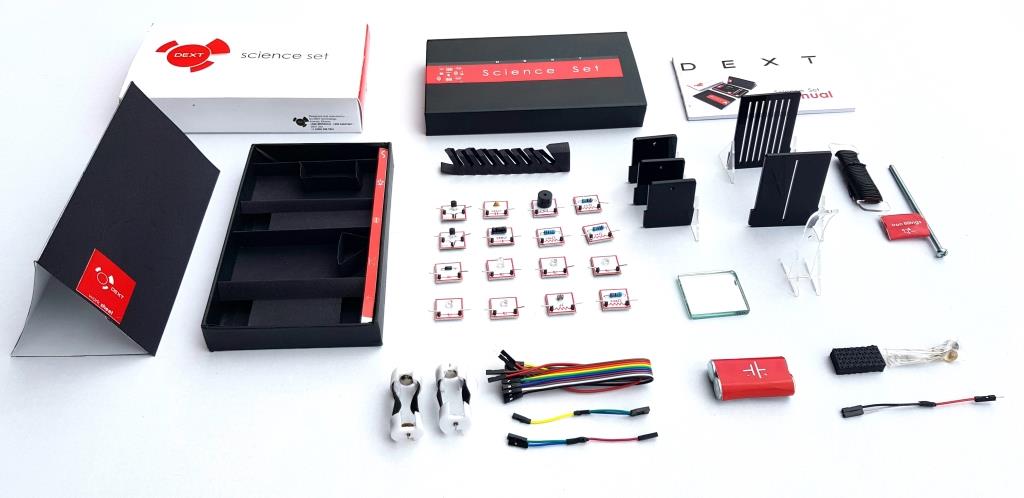
Title of Innovation: The Science Set
Year of implementation: N/A
Website: www.thescienceset.com
Implemented by: Dext Technology Limited
Country/Countries where the Innovation is being implemented: Ghana
Problem being solved
or years, African governments, Educators and parents have raised concerns about the lack of practical science education at the basic level. In the 21st Century, STEM education presents greater opportunities for personal and socioeconomic development. This is particularly true for Africa. However, for millions of students, scalable, portable and affordable solutions that bring quality practical science education to the masses are woefully lacking, thereby leading to a lack of science experience beyond the blackboard and a resultant lack of understanding of scientific concepts and low interest in science. The science set solves this by bringing one-on-one science lab experiences to students in an effective and safe way.
Description of innovation
The science set is an affordable,portable, and effective, practical toolbox (dimension) that provides practical experiential science education for students. It currently contains 46+ components that can help students perform 26+ experiments stipulated in their curriculum. The core users of the science set are basic education students across Africa and parts of the developing world starting from Ghana. The market is divided into private schools and government schools. However, our key customers are the parents of students, non-governmental institutions, schools, companies and the government. Currently, there are about 144million basic students across sub Saharan Africa.
Potential to be scaled and replicated
The innovation can be sustained by consistent product development with required investments to help scale it up. Currently, the science set has been adapted in various countries across the globe and can be used both in every certain be it the home or school of the user.
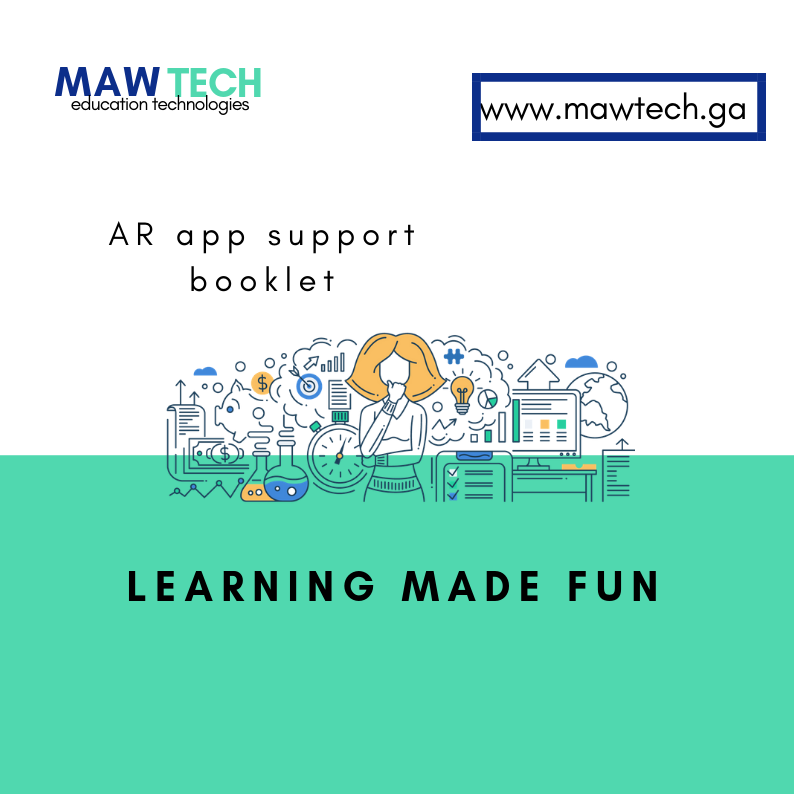
Title of Innovation: Augumented reality (AR) App for Learning
Year of implementation: 2019
Website: www.mawtech.ga
Implemented by: Maw Technologies
Country/Countries where the Innovation is being implemented: Zimbabwe
Problem being solved
Despite the high literacy rate in Zimbabwe and some parts of Africa, the concerning thing are the low passrates e.g this year(2019) the 0'level passrates was 32% in Zimbabwe next-door in South Africa it was about 84%. Pass rates really no longer matter our industries tell that story. The issue is lack of quality education and education in general in some parts of the world. Visit www.mawtech.ga
Description of innovation
Augumented reality (AR) is a technology that enhances reality i.e it adds on top of reality, mixing the virtual world with the real world. So we have managed to develop an AR android application able to scan using the device's camera. So the app has a support booklet which gives information about the product to be scanned. The booklet will vary in terms of information. Some for will be for animals, fruits, cities, experiments, transport systems, bridges, etc. So you launch(open) the app on your mobile device and scan the qr code on respective pages on the booklet. Features we want to add on the AR app include 1. sound features for animals and transportation 2. Environment detection for the products being scanned, all this will improve the experience. Virtual reality is a technology that creates virtual experiences, it avails what is not present physically to be seen with the use of virtual lens. So we want to leverage on this technology to curate virtual trips for users. Users will be able to tour cities, world wonders, tour research institutions, airports, experiments, etc. Though all this will come to be step by step. This will be achieved through the use of virtual lens (googles like wearable). Cloud computing is a revolutionary technology that helps in storage of data. The education sector spends a lot of resources, money which can be easily saved and directed elsewhere. Though this is a long term vision we looking forward to be the Dropbox of education.
Outcomes and Impact
Our products are very unique combination it's improving the way non STEM subjects are being taught at the same time exposing users to technology and innovation.We using and want to use Extended Realities (virtual reality, augmented reality and mixed reality) and cloud computing improve and better the learning process. Through Extended Realities we enhance and help learning become more visual. Through cloud computing we want to build an education cloud for education related stuff.
Potential to be scaled and replicated
Zimbabwe has over 3000 primary schools and over 1000 high schools each school with a cumulative enrollment of about 500 students all of which can leverage on our products to improve their services. Furthermore more there are people in need of our products yet not enrolled with any school. Scaling this to 54 African countries who also can leverage on our products. The cloud platform in particular is in need, hence can be scaled through adoption by more users and of cause a strong capital.

Title of Innovation: MathsGee.com
Year of implementation: 2002
Website: www.mathsgee.com
Implemented by: MathsGee
Country/Countries where the Innovation is being implemented: Kenya, Nigeria, South Africa, Zimbabwe
Problem being solved
MathsGee is solving the mismatch of skills expectations between employers and prospective employees (students) which leads to:
- A small employable talent pool
- Long and expensive onboarding process
- High unemployment
Description of innovation
An online bank for the facilitation of exchange of knowledge between course co-creators (employers) and students (prospective employees) driven by unemployed youths (instructional designers) with the objective of:
- Increasing the employable talent pool.
- Reducing onboarding time.
- Connecting unemployed youth with employers as authors
Outcomes and Impact
- Poverty reduction/economic empowerment
- Income increase for the once unemployed
- Reduction in onboarding time
- Increase in employable talent pool
- Cost saving for employers
- Greater cooperation between universities, government and employers
- Free education
Potential to be scaled and replicated
MathsGee is an online platform which can be accessed form every African country. The focus will be on having in-country representatives who liaise with companies in the different territories and also ensure that all African languages are included.
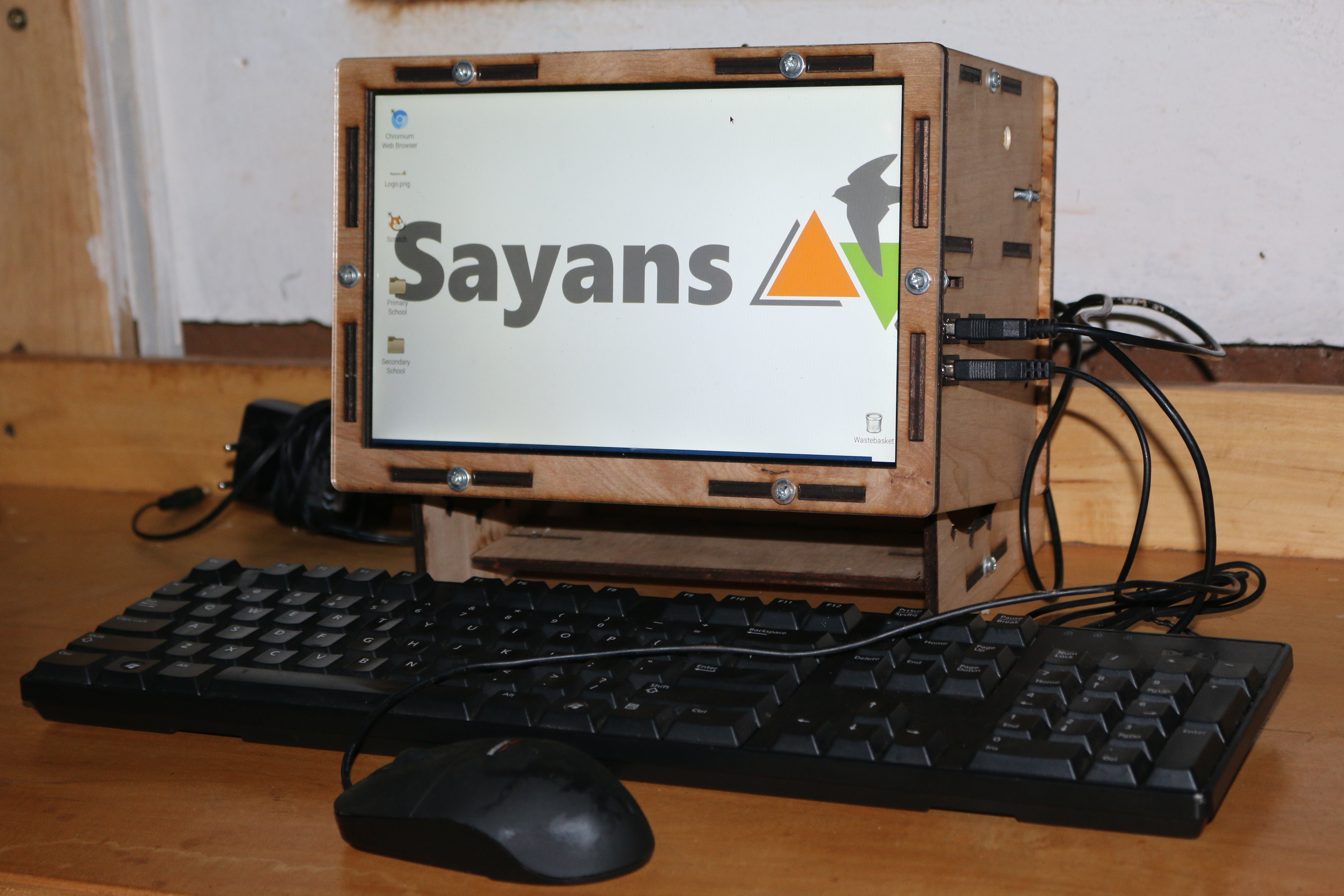
Title of Innovation: Sayans Computer
Year of implementation: 2017
Implemented by: Sayans Academy
Country/Countries where the Innovation is being implemented: Uganda
Problem being solved
There are fewer than 3 computers per 1,000 people; 1 person in 1,500 has access to internet (UN African Recovery Report). Uganda with about 45.71million people, only 1 million people access to computers with majority in urban areas.
This gap affects students the most and limits their learning outcomes.
Coupled with other factors, rural students perform poorly especially in STEM subjects because students only rely on notes given in class. Rural secondary schools constituting 57.6% in Uganda are challenged with educational books and resources with no or ill equipped science laboratories and yet have no access to computers and internet.
Description of innovation
Picture a time when every home, person or school in Africa no matter where they are located has access to and/or owns a computer. When computers are not only for the rich. This is our focus.
Sayans computer is a Raspberry Pi based computer locally designed and assembled in Uganda.
Our computers are light, portable and designed for use in resource limited areas. They are installed with educational software containing a plethora of illustrative videos from Khan Academy and other sources and reading material especially for science related subjects. The software is made in a way that the installed educational material is accessed using a web browser which gives the experience and knowledge of using internet even without it. The computers also have games on typing, learning words, mathematics, physics and other areas and are great for computer programming.
The computers are installed with battery power that can last up to 8 hours of use and needs a recharge power of just 10W making them fit for areas without electricity and recharged with just a small solar power system. At the price of $200, one can get a computer, accessories and a solar charging system.
We make the casings for the computers from recycled wood or are 3D printed locally. The components we use can be sourced locally making in country productions and repairs easy and possible meaning that the computers can easily be made from any other African country and reach any rural student anywhere in Africa.
Outcomes and Impact
Sayans computers come with educational software containing a collection of resources to enhance research even without internet. This means improved access to information and better learning outcomes. Secondly, our computers have a low power consumption and are installed with a long lasting battery bank. They are cheaper at both purchasing and the continuous use as they use very little power so anyone now can get a computer.
The computers are great for ICT programming and are installed already with programming software and tutorials and so better ICT development STEM learning outcomes.
Potential to be scaled and replicated
Raspberry Pi computers are open source technologies which means they are allowed to be used anywhere without restrictions. This means these computers can be designed anywhere in the world.
In addition, the components we use can be sourced locally within the different countries making in country productions and repairs easy and possible.
Revenues from the sale of the computers is used to produce more computers and donations from organizations are used to subsidize costs making more rural schools and families get access to computers.
Page 2 of 7


